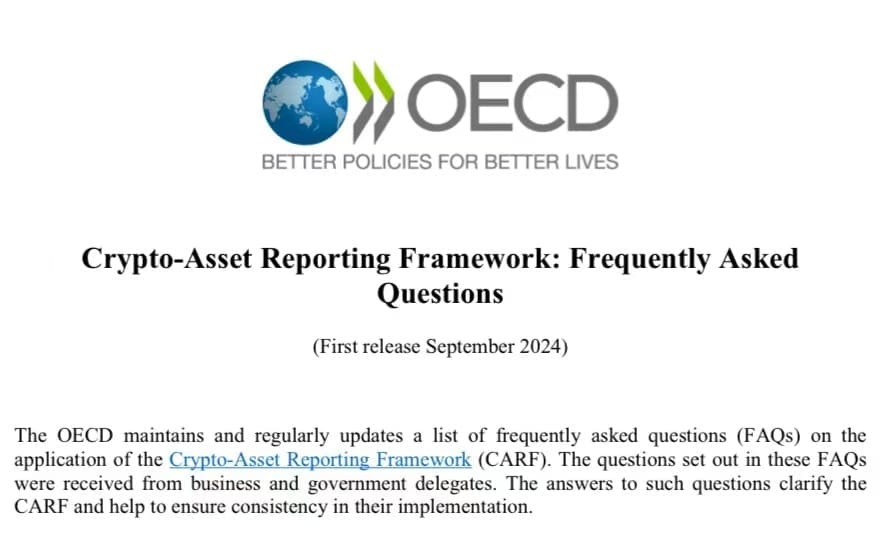OECD Releases First FAQ on CARF

In September 2024, the Organisation for Economic Co-operation and Development (OECD) released its first Frequently Asked Questions (“FAQ”) on the Crypto-Asset Reporting Framework (CARF), often referred to as the "crypto version of CRS." The primary purpose of this FAQ is to ensure consistency in the implementation of CARF and to address key questions.
At present, the FAQ is a modest three pages long—significantly shorter than its sibling, the CRS FAQ, which, as of May 2024, spans 24 pages. Considering that crypto assets are inherently more complex than traditional financial assets, this brevity is striking. However, don’t worry—OECD is currently working on more detailed FAQs addressing CARF’s application to non-custodial and decentralized services. We can expect these FAQs to become increasingly comprehensive over time.
In this article, we will break down the key points from this very first CARF FAQ.
Section I: Obligations of Reporting Crypto-Asset Service Providers (RCASPs)
1. Branch nexus
Q: If a Reporting Crypto-Asset Service Provider is subject to the reporting and due diligence requirements in Sections II and III in a Jurisdiction pursuant to Section I(A)(4) by virtue of having a Branch that is a regular place of business in that jurisdiction and the Reporting Crypto-Asset Service Provider does not have a higher nexus to another jurisdiction that has implemented CARF, should the Reporting Crypto-Asset Service Provider complete the reporting and due diligence requirements in that Jurisdiction with respect to Relevant Transactions effectuated by the Branch only or with respect to all Relevant Transactions effectuated by the Entity?
A: Because the highest nexus that the Reporting Crypto-Asset Service Provider has to a jurisdiction that has implemented CARF is a regular place of business through a Branch, the Reporting Crypto-Asset Service Provider should complete the reporting and due diligence requirements in the Jurisdiction with respect to all Relevant Transactions effectuated by the Entity, not only those effectuated by the Branch, unless the Entity has another Branch in a jurisdiction that has implemented CARF and Sections I(G) or (H) are applicable.
Our Analysis: This clarification closes a potential loophole. Companies cannot establish themselves in non-CARF jurisdictions and then operate through branches in CARF-compliant jurisdictions to evade certain reporting obligations.

